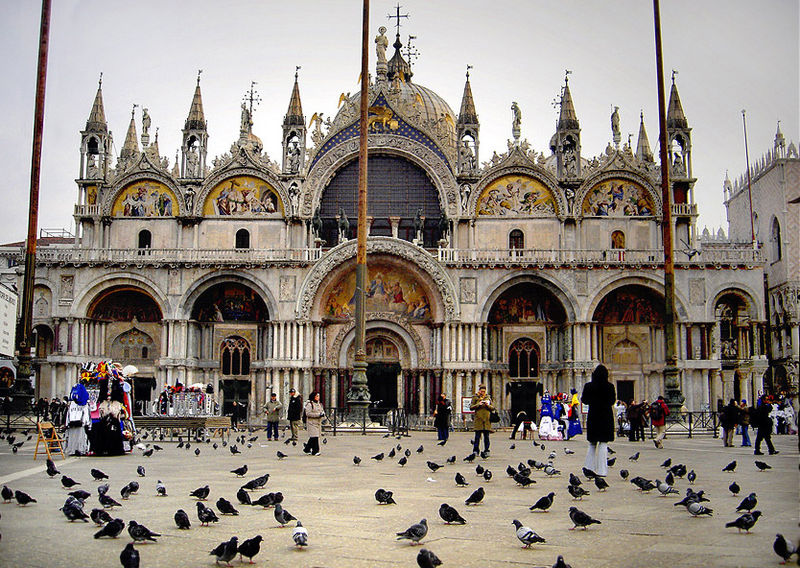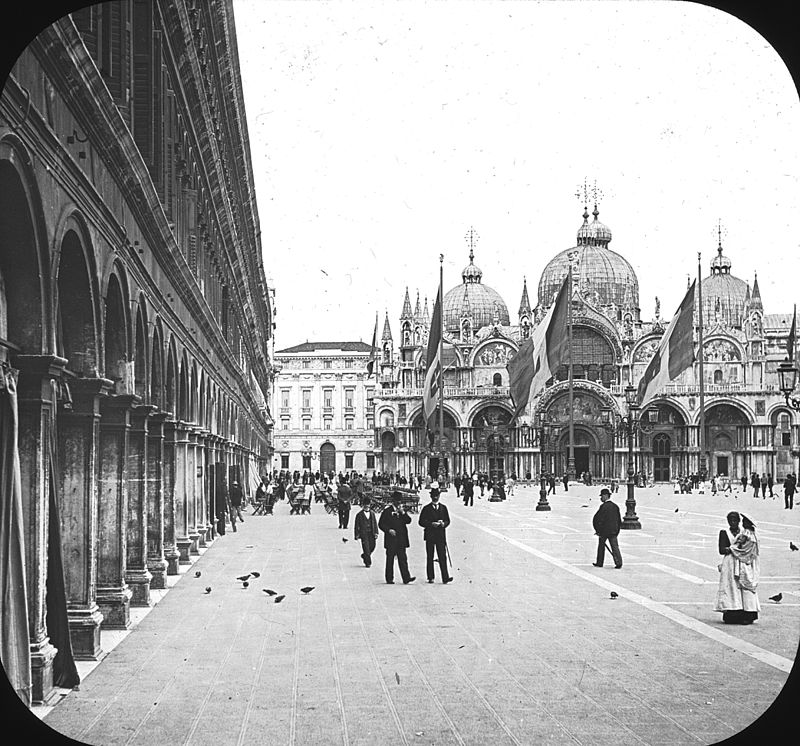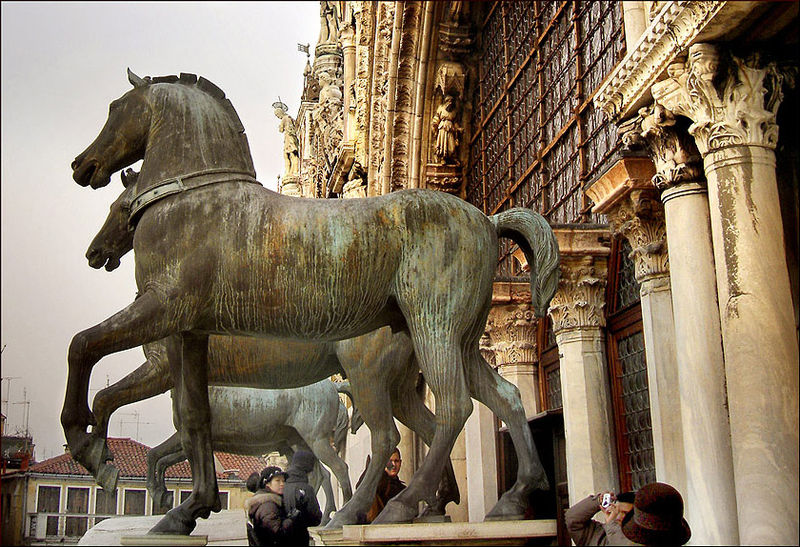St Mark’s Basilica
The Patriarchal Cathedral Basilica of Saint Mark (officially known in Italian as the Basilica Cattedrale Patriarcale di San Marco and commonly known as Saint Mark’s Basilica) is the cathedral church of the Roman Catholic Archdiocese of Venice, northern Italy. It is the most famous of the city’s churches and one of the best known examples of Italo-Byzantine architecture. It lies at the eastern end of the Piazza San Marco, adjacent and connected to the Doge’s Palace. Originally it was the chapel of the Doge, and has only been the city’s cathedral since 1807, when it became the seat of the Patriarch of Venice, archbishop of the Roman Catholic Archdiocese of Venice, formerly at San Pietro di Castello.
Structure
The basic structure of the building has not been much altered. Its decoration has changed greatly over time, though the overall impression of the interior with a dazzling display of gold ground mosaics on all ceilings and upper walls remains the same. The succeeding centuries, especially the period after the Venetian-led conquest of Constantinople in the Fourth Crusade of 1204 and the fourteenth century, all contributed to its adornment, with many elements being spolia brought in from ancient or Byzantine buildings, such as mosaics, columns, capitals, or friezes. Gradually, the exterior brickwork became covered with marble cladding and carvings, some much older than the building itself, such as the statue of the Four Tetrarchs (below). The latest structural additions include the closing-off of the Baptistery and St Isidor’s Chapel (1300s), the carvings on the upper facade and the Sacristy (1400s), and the closing-off of the Zen Chapel (1500s).
Horses of Saint Mark
The Horses of Saint Mark were installed on the balcony above the portal of the basilica in about 1254. They date to Classical Antiquity, though their date remains a matter of debate, and presumably were originally the team pulling a quadriga chariot, probably containing an emperor. By some accounts they once adorned the Arch of Trajan. The horses were long displayed at the Hippodrome of Constantinople, and in 1204 Doge Enrico Dandolo sent them back to Venice as part of the loot sacked from Constantinople in the Fourth Crusade. They were taken to Paris by Napoleon in 1797 but returned to Venice in 1815.
Tags: St Mark's Basilica, St Mark's Basilica Horses, St Mark's Basilica Structure




 Share On Facebook
Share On Facebook Tweet It
Tweet It






